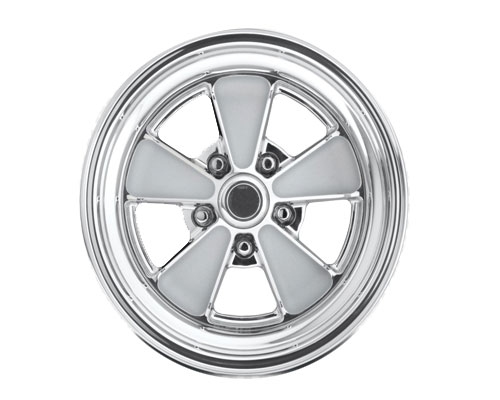Aluminum alloy wheels have many unmatched characteristics of steel wheels, so aluminum alloy wheels have been widely used in cars, motorcycles and other vehicles. Due to the high-quality requirements of automobile wheels, the structure itself is suitable for low-pressure casting, and the demand is large. Therefore, the development of low-pressure casting technology has been greatly promoted. At present, low-pressure casting has become the main process for the production of aluminum alloy wheels. AdTech offers hot top casting parts, flow control series for aluminum alloy wheels low-pressure casting.

Low-pressure casting can achieve a high degree of mechanization and automation, which not only improves productivity, but also greatly reduces the labor intensity of workers. However, the quality of low-pressure castings is affected by factors, such as process plans, process parameters, mold structure and manual operations, and the mutual influence. Improper design of any link or improper operation may cause defects in low-pressure castings. The occurrence of aluminum alloy wheel cracks is an important factor that affects the production cost and production efficiency of enterprises, and wheel hub cracks are a major hidden danger to automobile safety. Therefore, it is very important to discuss the cause of cracks in low-pressure cast aluminum alloy wheels.
Causes of Cracks in Aluminum Alloy Wheels
The cracks of low-pressure cast aluminum alloy wheels are mainly generated in the places where the stress is concentrated. The cracks caused by the uneven force when the hub is ejected, or the liquid solidification at the riser. Cracks are generally divided into cold cracks and hot cracks.
Cold cracking refers to cracks formed when the alloy is below its solidus temperature. Cold cracking is caused when the casting is cooled to a low temperature, and the casting stress acting on the casting exceeds the allowable degree of the strength or plasticity of the casting itself. Cold cracks mostly appear on the surface of the casting, and the surface of the crack is slightly oxidized. The thermal cracking is usually considered to occur during the solidification of the alloy. Due to the heat transfer of the mold wall, the casting always starts to solidify from the surface. When a large number of branches appear on the surface of the casting and overlap into a complete skeleton, the casting will show solid shrinkage.
At this time, there is still a layer of liquid metal film that has not been solidified between the dendrites. If the shrinkage of the casting is not hindered, the dendrite layer can shrink freely without force, and there will be no stress. When the shrinkage of the dendrite layer is hindered, it cannot shrink freely or be subjected to tensile force, and tensile stress will occur. At this time, the liquid film between the dendrites will be deformed by the action of stretching. When the tensile stress exceeds the strength limit of the liquid film, the dendrites will be pulled apart. However, there is still some liquid metal around the cracked part. If the liquid film is pulled away slowly, and there is enough liquid around it to flow into the cracked area in time, then the cracked area will be filled and “healed”. Castings will not show hot cracks. If the cracks cannot be “healed” again, hot cracks will appear in the casting. The surface of the hot fracture is strongly oxidized, showing a dark or black color without metallic luster.

